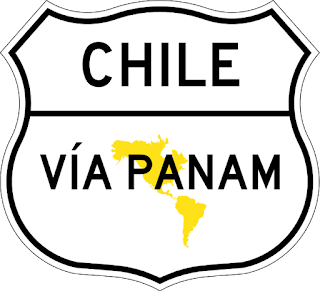 |
| Trapper Nelson (Flickr User Dreaming in the deep south/CC) |
Have you ever wanted to just get away from everybody? This is the story of a guy who had that desire. So he made it happen.This is the story of the Wild Man of the Loxahatchee.
Sometime around 1909, a baby was born to Polish immigrants in Trenton New York. He was named Vincent Nostokovich. As a boy he ran pretty free like many children did in those days. Now, some kids open lemonade stands, but not Vincent. He made money as a child by trapping small rodents such as muskrats in the New Jersey marshlands ans selling the skins.
When his mother died during his early teens, his father remarried. Vincent and and older step-brother, Charlie ran away to ride the rails as hobos. From New Jersey they rode west to Colorado then wandered south ending up in Mexico. Mexico did not welcome the youthful drifters and the young men were arrested for suspicion of gun running. Somehow gaining his release, Vincent and Charlie hopped a train into the United States where they continued hoboing.
 |
| Before Jupiter, Trapper Nelson Was A Railroad Hobo (Public Domain) |
The brothers hopped off of a boxcar in Jupiter, Florida and decided to stay a while. Somewhere on the road, Vincent and Charlie had changed their name from Nostokovich to the more Americanized name of Nelson.They had a third friend, John Dykas, who joined them to settle on the beach near Jupiter.
Life was not going to mellow out into a Jimmy Buffett beach bum fantasy for Nelson ,In 1931 Charlie Nelson shot John Dykas in the back. This infuriated Vincent and he would testify in his brothers murder trial that Charlie had done the crime. Vincent testimony resulted in a twenty year sentence for murder at the Raiford Prison for Charlie.
Vincent was fed up. He just wanted a place to live alone and with little human contact. After being pushed out of his home and being arrested in Mexico he did not seem to have much faith in humanity. Scraping together what he could and borrowing from his sister He purchased 800 acres in the deep woods up the Loxahatchee River into the Northern Everglades.
 |
| Up The Loxahatchee (Flickr User luvjnx/CC) |
Vincent Nelson was living up to his nickname of "Trapper" He set up a homestead near the river around began to live a survivalist kind of lifestyle, trapping smaller animals to sell their skins and dining on the meat. It was a perfect escapist kind of life for a loner like Trapper Nelson. He wanted more land to retreat into. though
With tourism in Florida continuing to grow in the 1930's, late that decade he hit upon the idea of starting a little zoo of animal he had trapped to draw a few paying visitors. I think his thinking was that if tourist were going to paddle up his river he was going to cash in off of them.
 |
| Jungle cruise at Trapper Nelsons camp circa 1950's (Flickr User Beth Scupham/CC) |
"Trapper Nelsons Zoo and Jungle Gardens" was a successful piece of roadside Americana for a few decades. He attracted some influential visitors like actor Gary Cooper, boxing champion Gene Tunney and many local VIP types. Nelson had begun to be billed as "The Wild Man of the Loxahatchee". He would perform at his zoo, wresting alligators and showing off his animals.
Trapper had gained quite a bit of land in the 1930's buying out on foreclosure auctions. After running the operation for decades, he made a bid to buy up some more land. When he did a government health inspector toured his property. It was determined that his zoo needed to have lavatories installed that had not been there previously. Nelson complied but his facilities were deemed inadequate and he was forced to close the zoo.
Already a paranoid guy, this was seen as an attack by the government which caused Trapper Nelson to go full Wild Man. He built dams on the Loxahatchee to slow approaching visitors. He would swing out on ropes over the river to try to scare off the intruders,
and he would greet those who did get to his homestead with a shotgun .Even his close friends needed to warn him via postcard before visiting his camp.
Through the 1960's Trapper Nelson was effectively a hermit.In July, 1968 he was a no show to an appointment with a very old friend that he was still speaking to. Concerned, the friend went up the river to the old Zoo where he found a body.Trapper Nelson lay dead on the ground his cabin, a shotgun blast through his stomach.. He died in his zoo that made him famous as the "Wild Man of The Loxahatchee", when all he wanted to do was be alone.
The case was ruled a suicide by the coroner, but rumors circulated, and still persist, that it was murder. Nelson was not a very popular person to those who knew him, as you might imagine. Many theories exist as to how and why one of his enemies might have murdered him.
 |
| Trapper Nelson and His Dog Bozo (Flickr User Beth Scupham/CC) |
After his death the land reverted to the State of Florida, who added it to the parcel that became Jonathon Dickinson State Park. The homestead and zoo was designated the "Trapper Nelson Zoo Historical Area" by the Parks Department. Today it is a largely unrestored ghost property visited most often by canoers and kayakers exploring the river. Rangers are on hand at times to answer questions.
The zoo is said to be haunted by the ghost of Trapper Nelson, so if you go there keep a wary eye. Who knows, you might be visited by the spirit of the Wild Man of The Loxahatchee.
Two videos help visualize our trip today..The first shows the approach to the camp, up the river by canoe. The second actually tours the camp and looks at the remains of Trapper Nelsons Zoo. Unfortunately, you tour guide is a bit of goof, but it does cover the property well.
Playlist Additions
This week our playlist additions will musically tell the story of Trapper Nelson and his zoo. At least the titles do, I tried to stay with lyrics that fit the story as good as possible, but you know, the devils in the details, as they say.
 |
| Trapper Nelson (Flickr User Beth Scupham/CC) |
Musically we move forward to Trapper Nelson's dropping out and moving upriver to start his homestead. The music gets funkier with The Meters, from New Orleans and their track Jungle Man.
Lazy River, a Louis Armstrong cover of the Hoagy Carmichael hit, follows. It suggests the flavor of the early days Trapper Nelson spent on the Loxahatchee building his homestead.
Next came the era when his zoo was visited by stars and travelers. When he was a showman and a worthwhile stop on the Florida tourist route, Fur Trappers Ball, by Woody Herman kicks things off. Sadly, YouTube did not have an example of the track to share with you.
Trapper Nelson was known for his act of wrestling alligators. This brings us to a zydeco number taken from an early 90's promotional CD I sent away for after seeing an ad in small print at the back of some music magazine. Adventures In Music sent me about a dozen discs and one was a pretty good Cajun mix. From that CD, Myrick "Freeze" Guillory plays Gator Man. Sorry I can't help with any links to this track, it's one that would require some hunting down.
How did people who visited the zoo react to seeing a Wild Man wrestling alligators. Duke Ellington and his Orchestra give us a Tourist Point Of View. Originally from his Far East Suite, I have used the remastered version heard in the documentary Ken Burns's Jazz: The Story Of American Music.
The good times ended at Trapper Nelsons Zoo when he was closed down by the government. Camper Van Beethoven talks about being closed down in Shut Us Down from their debut album.
Paranoid was how the whole situation left the Wild Man of the Loxahatchee. Black Sabbath have the market cornered on that subject with their timeless hit.
Suicide Is Painless was an instrumental as the TV series theme and I would guess that is the version of the song most people would recognize. The version on our playlist in reference to Trapper Nelsons self inflicted demise is from the film MASH. The song as used in the film features softer instrumentation and the little heard lyrics to the song.
The Beau Hunks are a Dutch group who recreate traditional pop music. They have a series of recreations of soundtrack music from the old Hal Roach comedies. One of the albums from the series, released in 1995, features music from the Little Rascals films. As a fan of the original films I think they hit the nail on the head with their performances. The track I selected to close this week pays homage to the popularity of the zoo ruins with canoeists and kayakers today. I hope you enjoy In My Canoe by the Beau Hunks.
 |
| Trapper Nelson's Today (Flickr User luvjnx/CC) |
Hobo Blues
Jungle Man
Lazy River
Fur Trapper's Ball
Gator Man Cajun Festival Sampler Myrick "Freeze" Guillory 3:28
Tourist Point Of View (Album Version)
Shut Us Down
Paranoid
Suicide Is Painless Movie Music: The Definitive Performances (Film Soundtrack Compilation)
In My Canoe The Beau Hunks Play the Original Little Rascals Music: 50 Roy Shield Themes from the Hal Roach Talkies
Signing Off And Coming Attractions
I hope you enjoyed the story of the Wild Man of the Loxahatchee. Have you ever "dropped" out? What happened? Did you have any great adventures or terrible disasters? Let us know about it in the comments.
Next Week: Route 66 in Chicago, Illinois is keeping us deep in the blues. Our next post is about Muddy Waters chief rival, the Howlin' Wolf.
Two Weeks: San Diego, California's Old Town has plenty more in store for us before we continue North on the old Highway 101.
Three Weeks: We will be leaving Jupiter. Florida and heading North On Interstate 95 as continue our journey.
Mileage Stats
Route 66: 0 Miles/1 State/694 Tracks/166 Videos/31 Posts
Highway 101: 22 Miles/2 Countries/1 State/518 Tracks/216 Videos/24 Posts
Interstate 95: 92 Miles/1 State/49 Tracks/87 Videos/10 Posts
And Now A Word From Our Sponsor...
If you like what you have read here I'd like to ask you a favor. If you purchase any item on Amazon after you link to them in the Amazon banner below, I will get a little something from them. It doesn't cost you any extra and I cannot see what you have purchased.
With your help, I can keep the show on the road for you.
With your help, I can keep the show on the road for you.
You Can Give me a Karma Donation Via PayPal
Keep Traveling!
To read more Old Highway Notes, choose an off ramp and click on the highway sign:
Vista Points
Be social, Get more info, View our YouTube playlist and more











he is a fascinating figure! pls post more!!!!
ReplyDelete